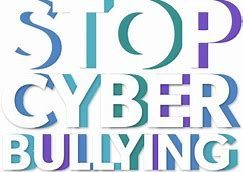Cyberbullying
Social networking sites, messaging apps, gaming sites and chat rooms such as Facebook, XBox Live, Instagram, YouTube, Snapchat and other chat rooms can be great fun and a positive experience.
But things can go wrong.
Cyberbullying can be defined as the use of information and communication technologies to support deliberate and hostile behaviour by an individual or group that is intended to harm others.
Typically cyberbullying involves the use of the Internet, email or mobile phones to send or post text or images intended to hurt or embarrass another person. In many cases, the spreading of offensive jokes or shocking or sexual material via phone or email may also constitute cyber-harassment.
Cyber bullying is rife on the internet and most young people will experience it or see it at some time. In a recent national bullying survey, 56% of young people said they have seen others be bullied online and 42% have felt unsafe online.
Cyber bullying can happen 24 hours a day, 7 days a week and it can go viral very fast.
Definitions:
A Troll is a person who starts quarrels or upsets people on the Internet to distract and sow discord by posting inflammatory and digressive, extraneous, or off-topic messages in an online community (such as a newsgroup, forum, chat room, or blog) with the intent of provoking readers into displaying emotional responses and normalizing tangential discussion, whether for the troll’s amusement or a specific gain
Types of cyberbullying:
There are many ways of bullying someone online and for some it can take shape in more ways than one. Some of the types of cyber bullying are:
Harassment – This is the act of sending offensive, rude, and insulting messages and being abusive. Nasty or humiliating comments on posts, photos and in chat rooms..
Denigration – This is when someone may send information about another person that is fake, damaging and untrue. Sharing photos of someone for the purpose to ridicule, spreading fake rumours and gossip. This can be on any site online or on apps. We even hear about people altering photos of others and posting in online for the purpose of bullying.
Flaming – This is when someone is purposely using really extreme and offensive language and getting into online arguments and fights. They do this to cause reactions and enjoy the fact it causes someone to get distressed.
Impersonation – This is when someone will hack into someone’s email or social networking account and use the person’s online identity to send or post vicious or embarrassing material to/about others. The making up of fake profiles on social network sites, apps and online are common place and it can be really difficult to get them closed down.
Outing and Trickery – This is when someone may share personal information about another or trick someone into revealing secrets and forward it to others. They may also do this with private images and videos too.
Cyber Stalking – This is the act of repeatedly sending messages that include threats of harm, harassment, intimidating messages, or engaging in other online activities that make a person afraid for his or her safety. The actions may be illegal too depending on what they are doing.
Exclusion – This is when others intentionally leave someone out of a group such as group messages, online apps, gaming sites and other online engagement. This is also a form of social bullying and a very common.
Bullying by spreading rumours and gossip
The worst thing about social networking sites and messaging apps is that anything nasty posted about you can be seen by lots of people and these posts can go viral very fast and be shared by so many people within minutes in some cases.
Posting false and malicious things about people on the internet can be classed as harassment.
Threatening behaviour
Anyone who makes threats to you on the internet could be committing a criminal offence. It’s against the law in the UK to use the phone system, which includes the internet, to cause alarm or distress. It could also be against the 1997 Harassment Act.
If threats are made against you then it’s essential you confide in someone you trust so that they can make a complaint.
If you can’t print out the threats use the “print screen” button or snipping tool to take a snapshot of the computer screen and then save that somewhere safe. Or if you have a phone or tablet, use the screenshot function and keep these images safe.
Tips and advice
- If you post abuse about anyone else online or if you send threats, you can be traced by the authorities. Every time you visit a website or make a posting, your internet service provider, Sky, BT or Virgin, has an electronic note of your activity. Even if you create an anonymous email address like Gmail, Hotmail or Yahoo, you can still be traced. Also, speak to your trade union representative who can support you through this period.
- Keep safe by using unusual passwords. Use a combination of letters, lowercase, uppercase, symbols and numbers. Don’t use any part of your name or email address and don’t use your birth date either because that’s easy for people who know you to guess. Don’t let anyone see you signing in and if they do, change the password as soon as you can.
- If you are using a public computer such as one in a library, computer shop, or even a shared family computer, be sure to sign out of any web service you are using before leaving the computer so that you can protect your privacy.
- Being bullied online can affect someone enormously. Being bullied can impact on a person’s self-esteem, confidence and social skills. Try to consider the impact your words may have and think twice before posting.


